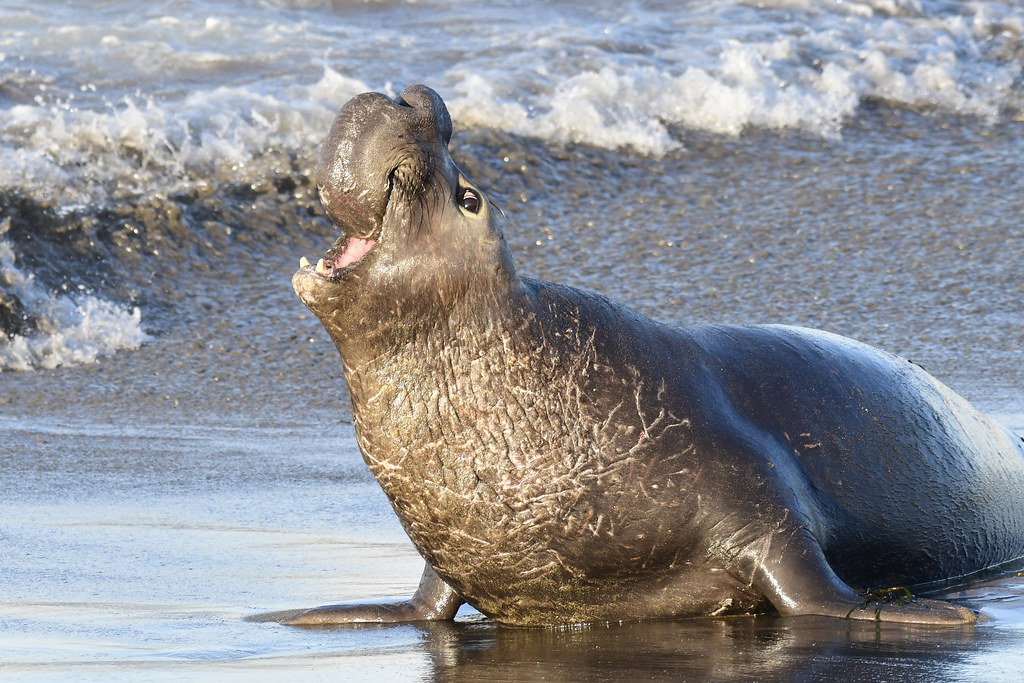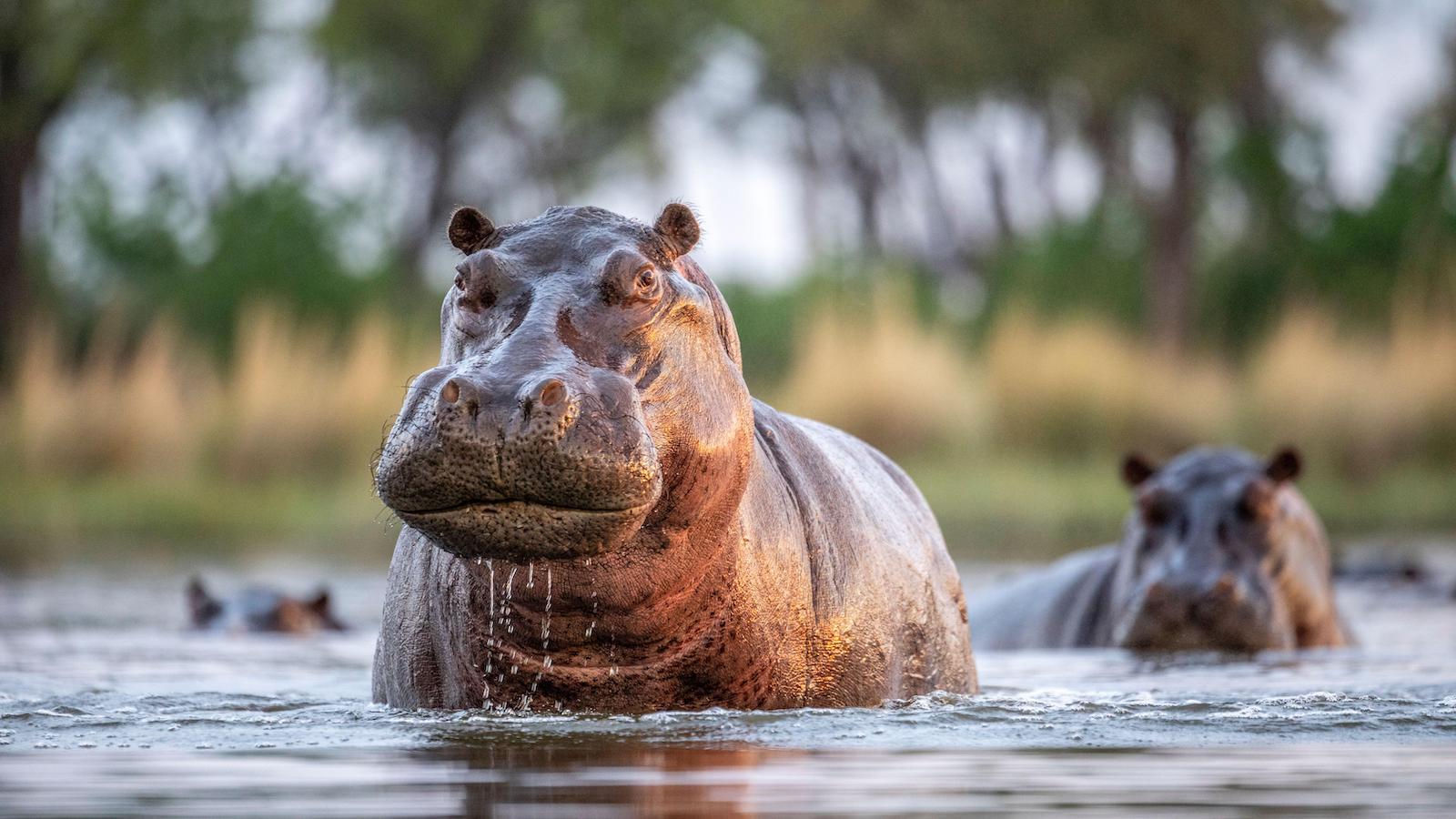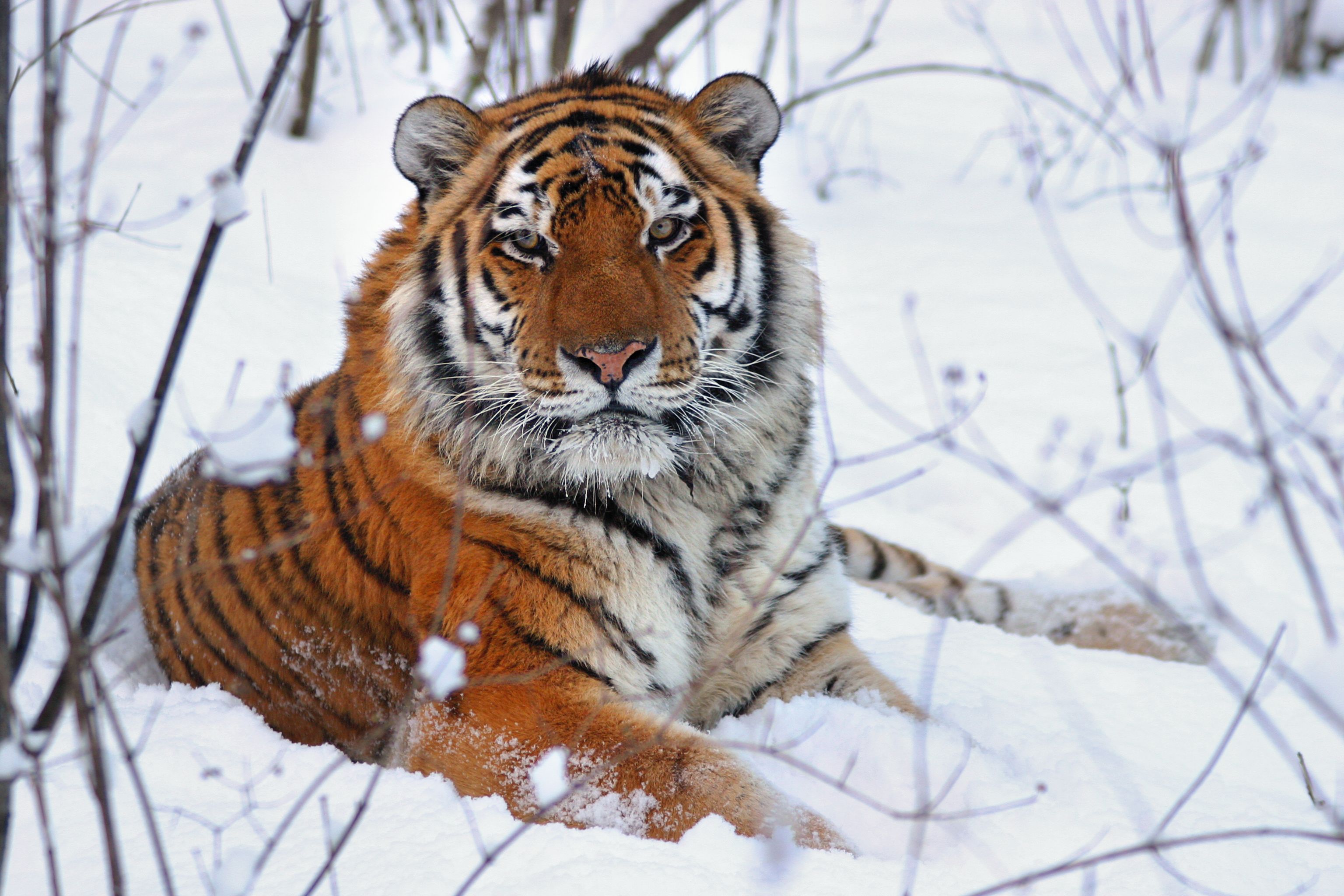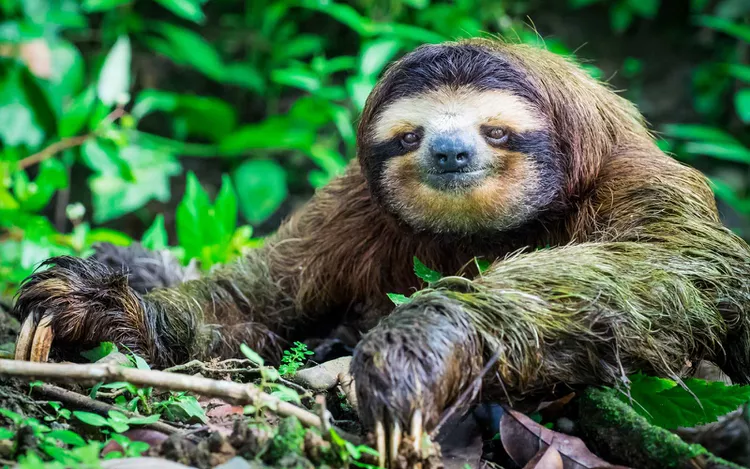What animal sleeps the least?
Here are 10 animals known for sleeping relatively little:
Related: Top 10 stupidest animals in the world
-
- Giraffes are known to sleep for very short periods, often just a few minutes at a time, and may even go without sleep for several days.
-
Tallest Land Animals:
- Giraffes are the tallest land animals on Earth, with adult males reaching heights of up to 18 feet (5.5 meters) and females reaching around 16 feet (4.8 meters). Their long necks contribute significantly to their height.
-
Distinctive Spots:
- Each giraffe has a unique coat pattern of irregularly shaped spots. No two giraffes have the exact same pattern, making their coat a distinctive feature that helps with individual identification.
-
Long Neck, Long Tongue:
- The giraffe's long neck, which can be up to 6 feet (1.8 meters) in length, is not only used to reach high branches but also contributes to their excellent eyesight. Additionally, giraffes have long tongues, sometimes reaching up to 18 inches (45 centimeters), which they use to grasp and strip leaves from branches.
-
Heart and Blood Pressure:
- Giraffes have a unique cardiovascular system that prevents their brains from experiencing a sudden increase in blood pressure when they lower their heads to drink water. A series of valves and a thick-walled artery, known as the "wonderful net," regulate blood flow.
-
Social Animals:
- Giraffes are social animals that live in loose, open herds. They don't have strong social bonds but may form temporary associations, especially mothers with their calves. They communicate through various vocalizations, including low-frequency noises that are often beyond human hearing.
-
Birth and Calves:
- Female giraffes, known as cows, give birth while standing, and the calf drops about 6 feet (1.8 meters) to the ground. This abrupt entry into the world helps stimulate the calf's first breath. Calves can stand and even run shortly after birth.
-
Diet and Eating Habits:
- Giraffes are herbivores with a diet primarily consisting of leaves, flowers, and fruits. Their favorite food is acacia leaves. They have a specialized tongue and prehensile lips to grasp and strip leaves from branches.
-
Conservation Status:
- Giraffes are currently classified as "Vulnerable" on the International Union for Conservation of Nature (IUCN) Red List of Threatened Species. They face threats such as habitat loss, poaching, and human-wildlife conflict.
-
Reticulated Giraffe:
- One of the nine recognized giraffe subspecies is the reticulated giraffe, known for its distinct and striking net-like pattern on its coat. Each subspecies has its unique coat pattern and geographical range.
-
Graceful Walk:
- Despite their long legs, giraffes have an unusual gait. Both legs on one side move together, creating a rocking motion. Their walking pace is slow and deliberate, but they can reach speeds of up to 35 miles per hour (56 km/h) when running.

-
- Giraffes are known to sleep for very short periods, often just a few minutes at a time, and may even go without sleep for several days.
-
- Elephants sleep for only a few hours each day, typically during the night. They often sleep while standing or leaning against a tree for support.
-
Largest Land Mammals:
- Elephants are the largest land animals on Earth. There are two primary species: the African elephant and the Asian elephant. The African elephant is the larger of the two.
-
Trunks and Tusks:
- Elephants have a prehensile trunk that is an extension of their upper lip and nose. It's a highly versatile organ used for breathing, smelling, drinking, and grabbing objects. Some elephants also have long, curved tusks, which are elongated incisor teeth.
-
Complex Social Structure:
- Elephants are known for their intricate social structures. They live in close-knit family groups led by the oldest and most experienced female, known as the matriarch. These groups often consist of related females and their offspring.
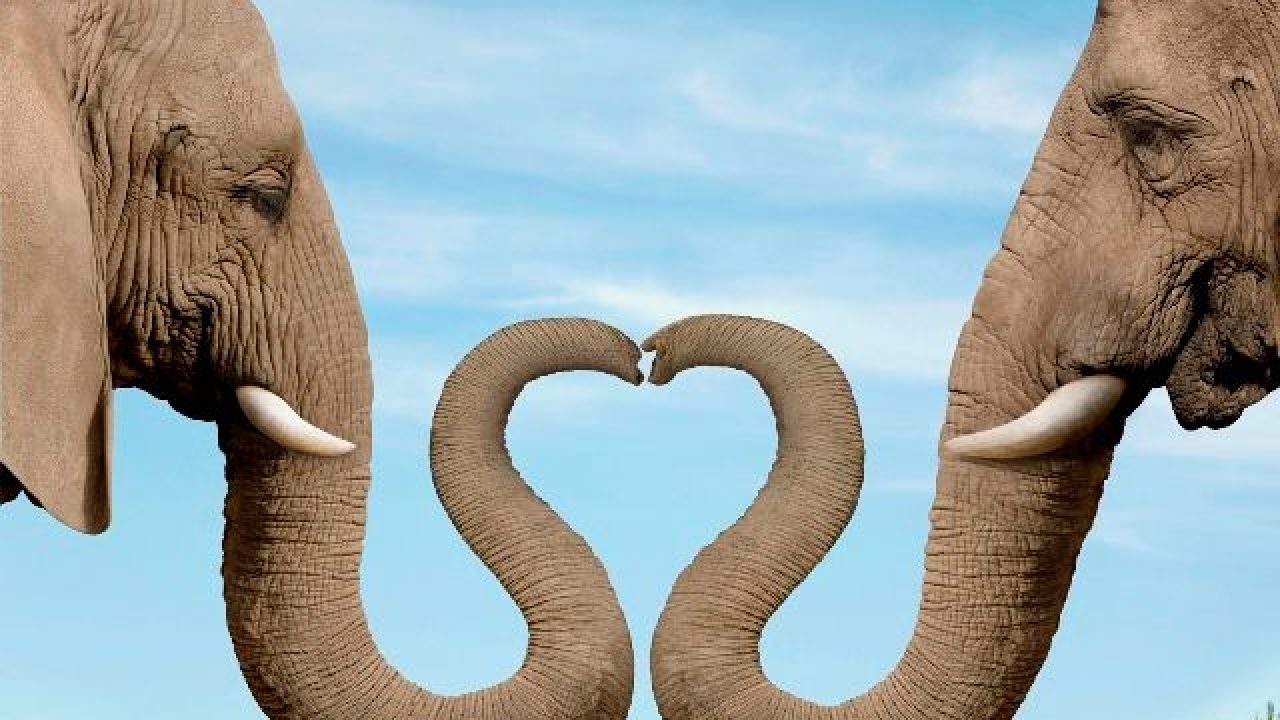
- Elephants are known for their intricate social structures. They live in close-knit family groups led by the oldest and most experienced female, known as the matriarch. These groups often consist of related females and their offspring.
-
Intelligence:
- Elephants are highly intelligent animals with complex emotions and problem-solving abilities. They are capable of learning a wide variety of tasks and can display empathy and self-awareness.
-
Excellent Memory:
- Elephants are believed to have exceptional memories. They can remember the locations of water sources, recognize individual humans even after many years, and recall complex migration routes.
-
Communication:
- Elephants communicate using a variety of vocalizations, including trumpeting, rumbling, and growling. They also use infrasound, which is below the range of human hearing, to communicate over long distances.
-
Mud Baths and Dust Showers:
- Elephants frequently engage in mud baths and dust showers. Mud acts as a sunscreen, protecting their skin from the sun, while dust helps to repel insects and parasites.
-
Long Gestation Period:
- Elephants have one of the longest gestation periods among mammals. African elephants carry their calves for about 22 months, while Asian elephants have a slightly shorter gestation period of around 18 to 22 months.
-
Herbivorous Diet:
- Elephants are herbivores, and their diet primarily consists of grasses, leaves, bark, and fruits. An adult elephant can consume several hundred pounds of food in a day.
-
Conservation Challenges:
- Elephants face various threats, including habitat loss, human-wildlife conflict, and poaching for ivory. Conservation efforts are crucial to protecting these majestic animals, and many organizations work to preserve elephant populations and their habitats.
-
Tool Use:
- There have been observations of elephants using tools, such as sticks, to scratch themselves in hard-to-reach places. This behavior highlights their problem-solving abilities and adaptability.
-
Cross-species Relationships:
- In some instances, elephants have been observed forming unique cross-species relationships, showing compassion and empathy toward other animals, including those from different species.
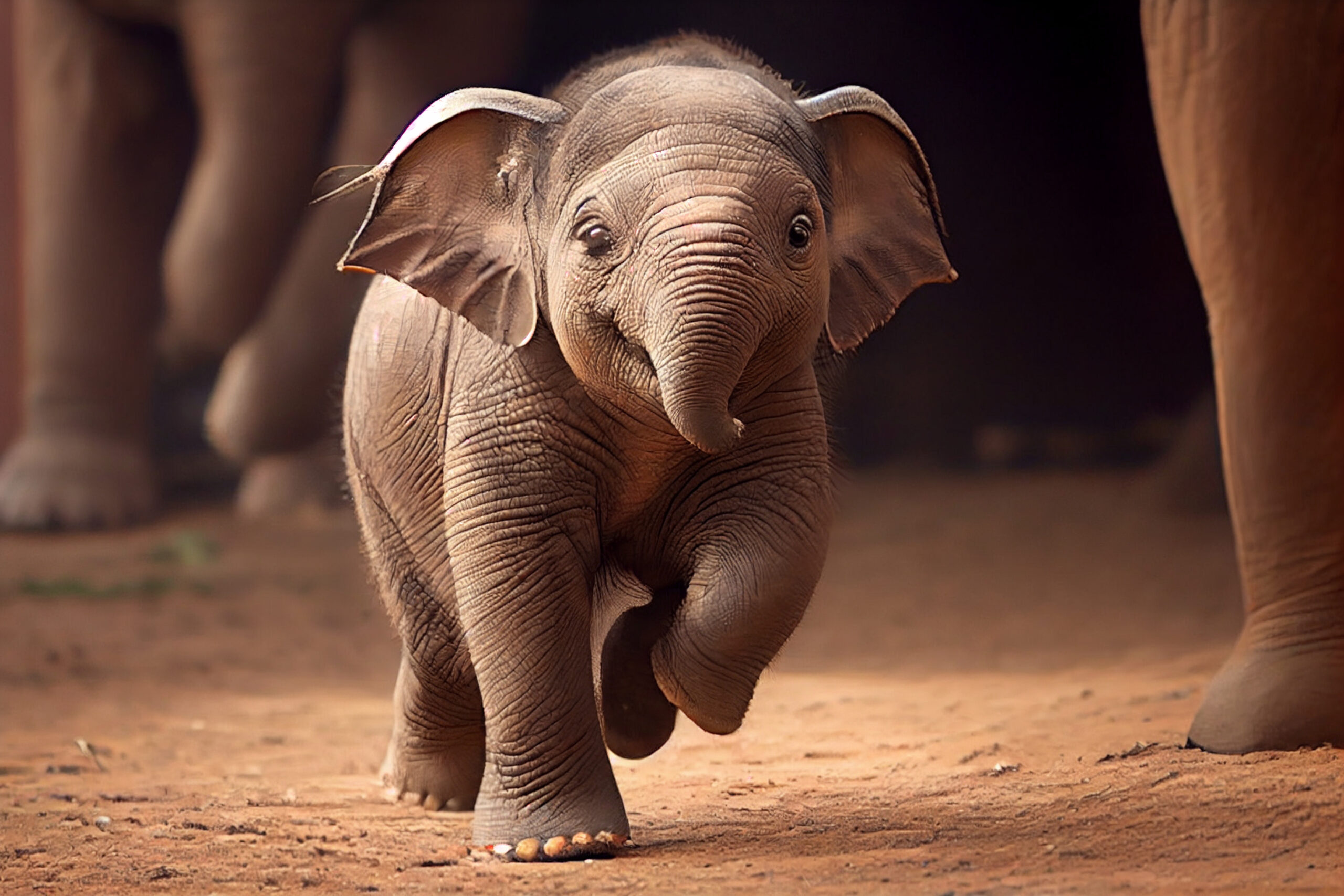
-
- Elephants sleep for only a few hours each day, typically during the night. They often sleep while standing or leaning against a tree for support.
-
- Horses generally sleep for short periods during the day and night. They have a unique ability to engage in short periods of deep sleep while standing.
-
Domestication and Partnership:
- Horses were one of the first animals to be domesticated by humans, and they have played a crucial role in the development of human civilizations. The partnership between humans and horses has been essential for transportation, agriculture, and various cultural and recreational activities.
-
Versatility:
- Horses are incredibly versatile animals. They have been used for a wide range of purposes, including transportation, agriculture, sports, therapy, and even in warfare. Their strength, speed, and intelligence make them adaptable to various roles.

- Horses are incredibly versatile animals. They have been used for a wide range of purposes, including transportation, agriculture, sports, therapy, and even in warfare. Their strength, speed, and intelligence make them adaptable to various roles.
-
Intelligence and Emotional Connection:
- Horses are known for their intelligence and ability to form strong emotional connections with humans. They can learn complex tasks, respond to cues, and build trust with their riders or handlers. The bond between humans and horses is often described as unique and mutually beneficial.
-
Communication Skills:
- Horses communicate with each other and with humans through a combination of vocalizations, body language, and facial expressions. They are highly sensitive to human emotions and can often pick up on subtle cues from their handlers.
-
Unique Gastric System:
- Horses have a unique digestive system known as hindgut fermentation. They are hindgut fermenters, which means that fermentation of fibrous material occurs in their large cecum and colon. This adaptation allows them to efficiently extract nutrients from plant-based diets.
-
Strong Social Structure:
- In the wild, horses live in social groups with a hierarchical structure. They form strong bonds with other members of their group and exhibit cooperative behaviors. Understanding and respecting the social dynamics of horses is crucial in their care and handling.
-
Wide Variety of Breeds:
- There are numerous horse breeds, each with its unique characteristics, size, and abilities. Breeds are often specialized for specific tasks, such as racing, show jumping, dressage, or farm work. Examples include the Arabian, Thoroughbred, Clydesdale, and many more.
-
Herbivorous Diet:
- Horses are herbivores, primarily consuming grasses and other plant materials. Their digestive system is adapted to process fibrous vegetation, and they have large, complex teeth for grinding down tough plant matter.
-
Instinctual Flight Response:
- Horses have a strong instinctual flight response, meaning they are naturally predisposed to flee from perceived threats. Understanding and managing this flight response is crucial for working safely with horses.
-
Longevity and Aging Process:
- Horses have a relatively long lifespan, with many living into their late teens or twenties. Their aging process is characterized by specific changes in their teeth, coat, and overall body condition. Proper care, nutrition, and veterinary attention are essential for their well-being throughout their lives.
-
Therapeutic Benefits:
- Equine therapy, or horse-assisted therapy, has become a recognized form of therapy for individuals with physical, emotional, or developmental challenges. Interacting with horses can have therapeutic effects, promoting relaxation, trust-building, and emotional well-being.

-
- Horses generally sleep for short periods during the day and night. They have a unique ability to engage in short periods of deep sleep while standing.
-
- Bullfrogs are known for their ability to stay alert and active for extended periods without much sleep. They often rest with their eyes open.
-
Size and Appearance:
- Bullfrogs are among the largest frogs in North America. Adults can reach impressive sizes, with some individuals having a body length of over 6 inches (15 cm) and longer when considering their powerful hind legs.
-
Powerful Jumpers:
- Bullfrogs are strong and powerful jumpers. Their muscular hind legs enable them to make impressive leaps both in and out of the water. They are skilled at leaping from lily pad to lily pad in aquatic environments.
-
Distinctive Call:
- Male bullfrogs are known for their deep and resonant calls, which sound like a low-pitched "jug-o-rum." The calls are used by males to establish territory and attract females during the breeding season. The distinctive sound is often associated with summer nights in wetland areas.
-
Aquatic Lifestyle:
- Bullfrogs are semi-aquatic, spending much of their time in or near water. They are excellent swimmers and have webbed hind feet, which aid in swimming and provide efficient propulsion through the water.

- Bullfrogs are semi-aquatic, spending much of their time in or near water. They are excellent swimmers and have webbed hind feet, which aid in swimming and provide efficient propulsion through the water.
-
Carnivorous Diet:
- Bullfrogs are carnivorous and have a diet that includes insects, small fish, tadpoles, and even small mammals. They are opportunistic feeders and have a wide range of prey items.
-
Coloration and Camouflage:
- Bullfrogs often have a greenish-brown coloration that helps them blend in with their surroundings. Their skin is smooth, and they have distinct tympanic membranes (external eardrums) behind their eyes.
-
Tolerance to Harsh Conditions:
- Bullfrogs are known for their adaptability and ability to tolerate a wide range of environmental conditions. They can inhabit both permanent and temporary water bodies, including ponds, lakes, streams, and marshes.
-
Invasive Species Concerns:
- In some regions, bullfrogs have become invasive species when introduced to areas outside their natural range. This can have negative impacts on local ecosystems, as bullfrogs may outcompete native amphibians for resources and potentially introduce diseases.
-
Egg Masses and Tadpoles:
- Female bullfrogs lay large clusters of eggs, often attaching them to submerged vegetation. The eggs hatch into tadpoles, which undergo metamorphosis into froglets as they grow. The tadpoles play an essential role in aquatic ecosystems.
-
Long Lifespan:
- Bullfrogs have relatively long lifespans for amphibians. They can live for several years in the wild, with some individuals reaching up to 8-10 years or more under favorable conditions.

-
- Bullfrogs are known for their ability to stay alert and active for extended periods without much sleep. They often rest with their eyes open.
-
- Certain shark species, like the great white shark, exhibit what is known as "unihemispheric slow-wave sleep," allowing them to rest one hemisphere of their brain at a time while remaining partially awake.
-
Cartilaginous Skeleton: Unlike most fish that have bony skeletons, sharks have a cartilaginous skeleton, which is lighter and more flexible. This adaptation allows them to be agile swimmers.
-
Ancient Lineage: Sharks have been around for a very long time, with a lineage dating back over 400 million years. They have survived multiple mass extinctions and have evolved into a diverse range of species.
-
Superior Senses: Sharks possess a remarkable set of senses. Their keen sense of smell helps them locate prey from great distances, and their ability to detect electrical fields (electroreception) assists in hunting prey even in low visibility conditions.

-
Teeth and Jaw Structure: Sharks are known for their numerous, replaceable teeth. Some species can go through thousands of teeth in their lifetime. Their jaw structure allows them to bite with incredible force, contributing to their reputation as formidable predators.
-
Apex Predators: Many shark species are apex predators, meaning they are at the top of their respective food chains. They play a crucial role in maintaining the balance of marine ecosystems by controlling the populations of their prey.
-
Diverse Species: There are over 500 known species of sharks, ranging from the tiny dwarf lanternshark to the massive filter-feeding whale shark. They exhibit a wide range of sizes, shapes, and behaviors, adapting to various marine environments.
-
Buoyancy Control: Sharks have a specialized liver that helps them control their buoyancy. It contains a large amount of oil, which makes them less dense than water, allowing them to stay afloat without constantly swimming.
-
Survival Adaptations: Sharks have evolved various adaptations for survival, such as camouflage, countershading, and the ability to live in a wide range of temperatures and depths. Some species, like the bull shark, can even tolerate freshwater environments.
-
Global Distribution: Sharks are found in oceans all around the world, from shallow coastal waters to the deep sea. Their wide distribution showcases their ability to adapt to diverse habitats.
-
Mysterious Behavior: Despite decades of research, many aspects of shark behavior, including migration patterns and breeding habits, remain mysterious. Their elusive nature has contributed to their mystique and fascination.

-
- Certain shark species, like the great white shark, exhibit what is known as "unihemispheric slow-wave sleep," allowing them to rest one hemisphere of their brain at a time while remaining partially awake.
-
- Bats, in general, are known for having irregular sleep patterns. The brown bat, for instance, sleeps for shorter durations and can easily be disturbed during its resting period.
-
Flight: Bats are the only mammals capable of sustained flight. Their wings are modified forelimbs with elongated fingers covered by a thin membrane of skin. This adaptation allows them to navigate through the air with impressive agility.
-
Echolocation: Many bats use echolocation, a sophisticated biological sonar system, to navigate and locate prey in complete darkness. They emit high-frequency sound waves and listen to the echoes that bounce back, allowing them to build a mental map of their surroundings.
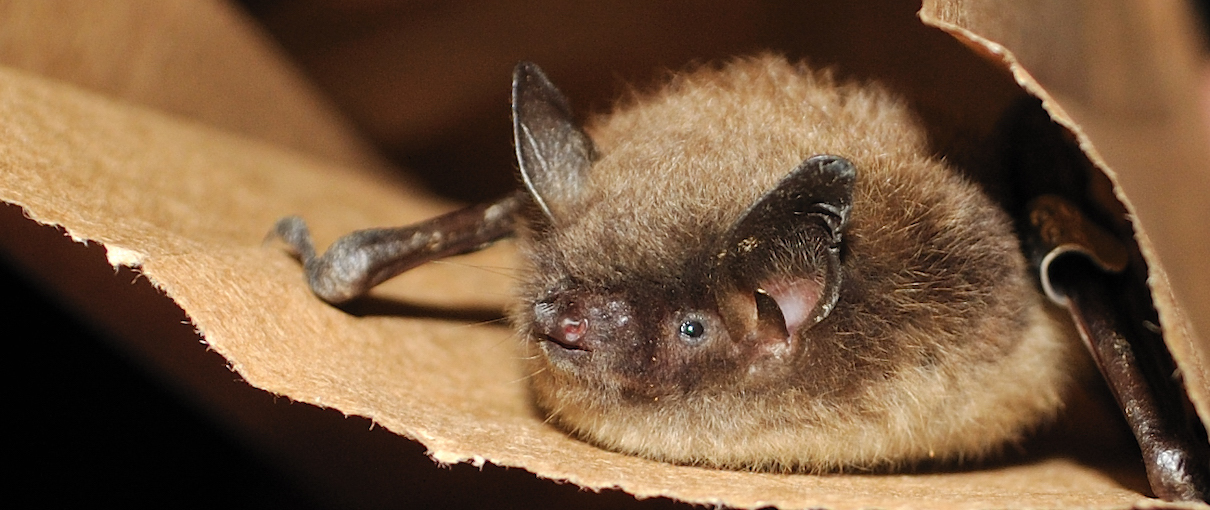
-
Nocturnal Behavior: The majority of bats are nocturnal, meaning they are active during the night. This behavior helps them avoid competition with birds and other daytime-active animals for resources.
-
Diverse Diets: Bats have diverse diets that can include insects, fruits, nectar, small mammals, and even blood (hematophagy) in the case of vampire bats. This dietary diversity makes them ecologically important as pollinators, seed dispersers, and insect controllers.
-
Roosting Habits: Bats exhibit various roosting behaviors. Some bats roost in caves, while others use trees, buildings, or other structures. Some species are solitary, while others form large colonies. Bats also have different methods of hanging or perching upside down when roosting.
-
Longevity and Reproductive Strategies: Bats tend to have longer lifespans relative to their body size compared to other mammals. They also have unique reproductive strategies, such as delayed fertilization and extended parental care. Some species give birth to only one offspring per year, and the young are cared for by the mother for an extended period.
-
Variety of Sizes: Bats come in various sizes, from the tiny bumblebee bat (the world's smallest mammal) to larger fruit bats with wingspans of up to 5 or 6 feet. This diversity allows bats to occupy a wide range of ecological niches.
-
Thermoregulation: Bats are capable of thermoregulation, allowing them to control their body temperature. Some species are able to enter a state of torpor, lowering their metabolic rate and conserving energy during periods of inactivity or unfavorable environmental conditions.

-
- Bats, in general, are known for having irregular sleep patterns. The brown bat, for instance, sleeps for shorter durations and can easily be disturbed during its resting period.
-
- Some antelope species, such as the springbok, are known to sleep very little, often taking short naps throughout the day.
-
Horns: Antelopes typically have permanent, unbranched horns. Unlike deer, where only males generally have antlers, both male and female antelopes can have horns. The size and shape of horns can vary widely among species and may play a role in defense, mate attraction, or establishing dominance within a group.
-
Herbivorous Diet: Antelopes are exclusively herbivores, feeding on grasses, leaves, and other plant materials. Their digestive systems are adapted to efficiently extract nutrients from plant matter.
-
Ruminant Stomachs: Like other members of the Bovidae family, antelopes are ruminants. They have a complex stomach with multiple compartments, including the rumen, reticulum, omasum, and abomasum. This allows them to efficiently break down tough plant materials through a process of fermentation and regurgitation.
-
Adaptations for Running: Many antelopes are well-adapted for running at high speeds to evade predators. They often have slender, agile bodies and long legs. Some species, like the springbok, are known for their impressive leaping ability.
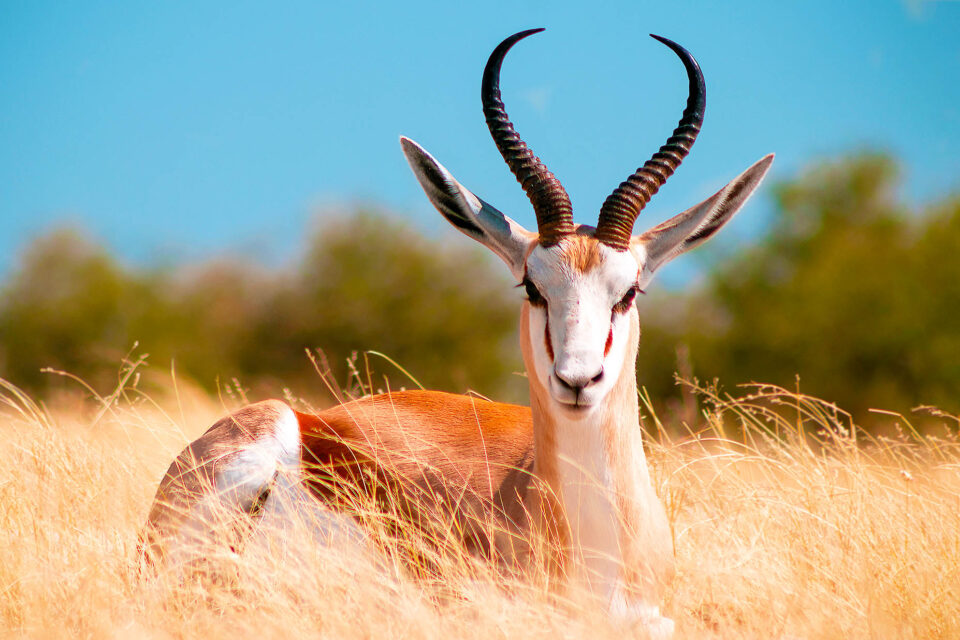
-
Social Structure: Antelopes exhibit a range of social structures. Some species are solitary, while others form herds of varying sizes. Herds may consist of females and their offspring, while males may form bachelor groups or establish territories.
-
Territorial Behavior: In many antelope species, males may establish territories that they defend against other males. The size and quality of a male's territory can influence his ability to attract mates.
-
Specialized Senses: Antelopes often have keen senses, including good eyesight and hearing. These senses help them detect predators and potential threats in their environment.
-
Seasonal Migration: Some antelope species engage in seasonal migrations in search of food and water. This behavior helps them cope with changing environmental conditions and resource availability.
-
Variety of Sizes and Colors: Antelopes come in various sizes, from small species like the dik-dik to larger species like the kudu or wildebeest. They also exhibit a range of colors and markings, which can serve various purposes, including camouflage and species recognition.
-
Adaptation to Various Habitats: Antelopes are found in a wide range of habitats, including grasslands, savannas, deserts, and forests. Their adaptability to different environments contributes to their distribution across diverse ecosystems.
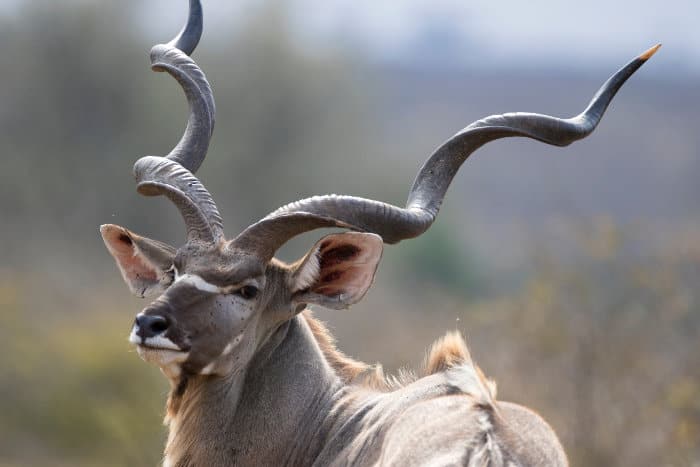
-
- Some antelope species, such as the springbok, are known to sleep very little, often taking short naps throughout the day.
-
- The alpine swift is a bird that spends most of its life in the air, even sleeping on the wing. It has been observed sleeping while gliding at high altitudes.
-
Impressive Flight Skills: Alpine Swifts are exceptional fliers and are known for their agile and powerful flight. They are capable of covering vast distances and can stay airborne for extended periods without landing.
-
Long Migration: These birds are migratory and undertake long-distance migrations. During the breeding season, they are found in Europe and parts of Asia, but they migrate to sub-Saharan Africa for the winter.
-
Breeding Sites: Alpine Swifts often breed in colonies in cliff faces, rocky crevices, or other high-altitude locations. They choose these locations for nesting to minimize predation risks.
-
Monogamous Behavior: Alpine Swifts typically form monogamous pairs, and they often return to the same breeding site year after year. Mated pairs engage in aerial displays as part of their courtship rituals.
-
Unique Nesting Materials: They build cup-shaped nests using a combination of feathers, grass, and their saliva. The saliva helps to stick the materials together and creates a waterproof lining for the nest.
-
High-Altitude Roosting: Outside of the breeding season, Alpine Swifts are known to roost at extremely high altitudes. They have been observed flying at altitudes of over 20,000 feet (6,000 meters) during migration, and they may even sleep on the wing.
-
Distinctive Appearance: Alpine Swifts have a distinctive appearance with a dark, uniform plumage and a white throat patch. They have long, swept-back wings and a short, square tail.
-
Vocalizations: Alpine Swifts are generally quiet, but they produce a variety of calls during their aerial displays and interactions with other swifts. Their vocalizations are often high-pitched and may include screams, chattering, and clicking sounds.
-
Dependency on Flying Insects: Like other swifts, Alpine Swifts are aerial insectivores, meaning they catch insects while flying. They have a specialized diet primarily consisting of flying ants, beetles, and other airborne insects.
-
Conservation Status: While not currently considered globally threatened, some populations of Alpine Swifts may face local declines due to habitat loss and changes in insect populations, potentially linked to climate change.

-
- Related: Top 15 most beautiful nocturnal animals in the world
- The alpine swift is a bird that spends most of its life in the air, even sleeping on the wing. It has been observed sleeping while gliding at high altitudes.
-
- Giant pandas, despite being mammals, sleep less than most bears. They may sleep for short periods and often have more active periods during the day.
-
Unique Appearance: Giant pandas are easily recognizable by their distinctive black and white fur. Their face is mostly white with black eye patches, ears, and shoulders. The rest of their body is covered in black fur, creating a striking contrast.
-
Bamboo Diet: Giant pandas are primarily herbivores, with bamboo making up about 99% of their diet. They have a specialized "pseudo thumb" (an extension of the wrist bone) that helps them grasp bamboo stems and strip off the leaves.
-
Digestive System: Despite being classified as carnivores, giant pandas have a digestive system more similar to that of herbivores. However, their digestive tract is not very efficient at extracting nutrients from bamboo, so they need to consume large quantities to meet their energy requirements.
-
Solitary Behavior: Giant pandas are generally solitary animals. They have large home ranges and use scent marking to communicate with other pandas, especially during the breeding season.
-
Conservation Status: Giant pandas are classified as vulnerable on the International Union for Conservation of Nature (IUCN) Red List. Conservation efforts, including habitat protection and breeding programs, have been implemented to help increase their population.
-
Limited Range: Giant pandas are native to the mountainous regions of central China, particularly in Sichuan, Shaanxi, and Gansu provinces. They inhabit dense bamboo forests in elevations ranging from 5,000 to 13,000 feet (1,500 to 4,000 meters).
-
Low Reproductive Rate: Pandas have a relatively low reproductive rate. Female giant pandas are fertile for only a few days each year, usually during the spring. Additionally, successful reproduction in captivity has been challenging.
-
Endearing Behavior: Giant pandas often exhibit behaviors that endear them to people, such as rolling, somersaulting, and playing with objects. They may also sit upright, holding objects in a manner reminiscent of how humans might hold food.
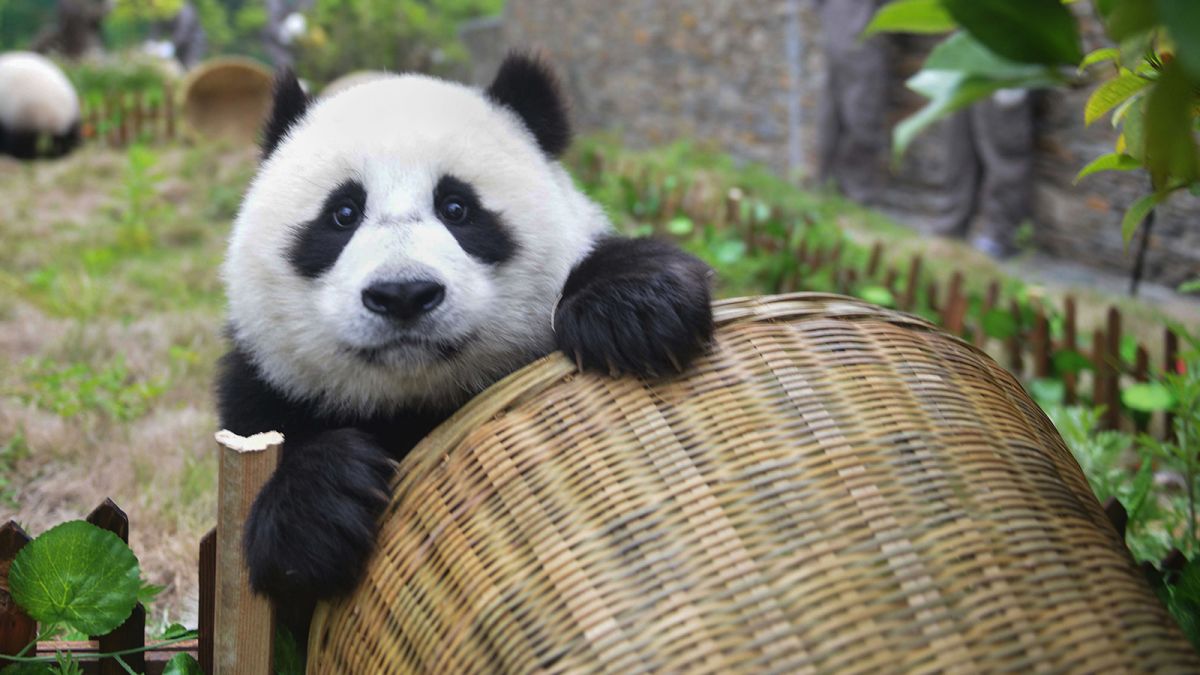
-
Large Size: Adult giant pandas are sizable bears. They can weigh between 150 to 300 pounds (68 to 136 kilograms), with males being larger than females. Despite their size, they are agile climbers.
-
Symbol of Conservation: Giant pandas are a global symbol of wildlife conservation. Their iconic status has helped raise awareness about the importance of protecting endangered species and their habitats.

-
- Giant pandas, despite being mammals, sleep less than most bears. They may sleep for short periods and often have more active periods during the day.
-
- Dolphins, including the bottlenose dolphin, are known to have unihemispheric slow-wave sleep, allowing them to rest one hemisphere of their brain at a time while maintaining some level of consciousness.
-
Intelligence: Bottlenose dolphins are considered one of the most intelligent animals on Earth. They display problem-solving abilities, use tools, and exhibit complex social behaviors.
-
Communication: Dolphins communicate with each other using a combination of clicks, whistles, and body movements. They have a sophisticated system of vocalizations that allows them to convey information and maintain social bonds.

-
Echolocation: Dolphins use echolocation to navigate and locate prey. They emit clicks, and by interpreting the echoes, they can determine the size, shape, and distance of objects in their environment. This skill is crucial for hunting and avoiding predators.
-
Social Structure: Bottlenose dolphins live in social groups called pods, which can consist of a few individuals to several dozen members. These pods are dynamic, and dolphins may form strong social bonds with certain individuals.
-
Playful Behavior: Dolphins are known for their playful antics, including riding waves, leaping out of the water (porpoising), and playing with objects like seaweed or even bubbles. Play serves various purposes, including social bonding and skill development.
-
Cooperative Hunting: Dolphins often engage in cooperative hunting, working together to corral schools of fish into tight groups. They may use various techniques, such as creating a "net" of bubbles to trap prey.
-
Mating and Reproduction: Female dolphins typically give birth to a single calf after a gestation period of about 12 months. Calves are nursed for an extended period, and mothers are known to be protective and attentive to their offspring.
-
Migration: Some populations of bottlenose dolphins are known to undertake seasonal migrations. They may follow prey movements, seek warmer waters, or engage in other activities related to their life cycle.
-
Adaptations for Marine Life: Bottlenose dolphins have streamlined bodies, a dorsal fin, and flippers, which are adaptations for their marine lifestyle. Their tail flukes provide powerful propulsion, allowing them to swim at high speeds.
-
Global Distribution: Bottlenose dolphins are found in both coastal and offshore waters around the world, in both warm and temperate climates. They inhabit a wide range of environments, from shallow estuaries to deep oceanic waters.
-
Human Interaction: Dolphins have a long history of interaction with humans. They are often featured in marine parks and aquariums, where they participate in shows showcasing their intelligence and agility.
-
Conservation: While the global population of bottlenose dolphins is not currently endangered, certain local populations face threats from habitat degradation, pollution, accidental entanglement in fishing gear, and boat strikes. Conservation efforts are crucial to ensure the well-being of these marine mammals.

-
- Dolphins, including the bottlenose dolphin, are known to have unihemispheric slow-wave sleep, allowing them to rest one hemisphere of their brain at a time while maintaining some level of consciousness.
Additionally, some animals may compensate for short sleep durations with periods of restful inactivity. Hope you get useful information and interesting moments through the article: Top 10 animals that sleep the least in the world
--------------------
Which animals does not sleep?
December, 2023, 06:55 PM IST. 7 Animals That Don't Sleep. ...
- Dolphins. As weird as it sounds, but it's true, newborn dolphins don't sleep for a month. ...
- Bullfrogs. Bullfrogs always stay alert and can react to stimuli if they are awake. ...
- Alpine swift. ...
- Bluefish. ...
- Rhopalocera (Butterflies) ...
- Orca. ...
- Giraffes.
Which animal sleeps only 2 hours a day?
the African Elephant
Wild Elephants Sleep Just 2 Hours a Day, Puzzling Scientists in UCLA Study. A study of matriarchal elephants in Botswana revealed the lumbering creatures only slept for two hours a day — apparently the least of any mammals. Anyone who feels proud for pulling an all-nighter has nothing on the African Elephant.
What animal can go without sleep the longest?
Walruses
But these blubbery sleep-loving mammals also have the ability to stay up for a very long time without complete sleep. Scientists say that walruses can swim and stay awake continuously for 84 hours. They probably rest as much to have energy for these intense periods of non-stop activity.
Will ants sleep?
They sure do. And just like us, the amount of sleep they need varies. Queen fire ants fall into relatively long, deep sleeps and kip for an average of nine hours every day. The busy worker ants, on the other hand, get their rest by taking hundreds of short power naps.
Does a jellyfish sleep?
However, Caltech scientists have now discovered that, as different as our daily schedules may seem, humans and jellyfish actually start and end their days with the same behavior: sleep. This finding that jellyfish sleep implies that sleep is an ancient behavior, largely untouched by millennia of evolution.
Which animal can sleep for 3 years?
Snails
Answer. Answer: Snails can sleep for three years. Explanation: They need moisture to survive and if the weather is not likewise they sleep upto 3 years. Snails' ancestors are one of the earliest known types of animals in the world
